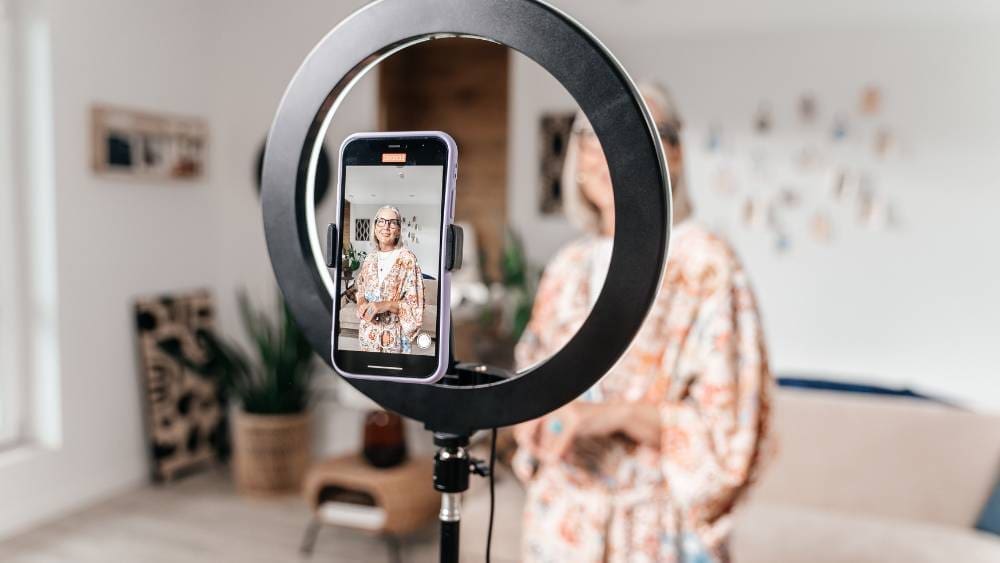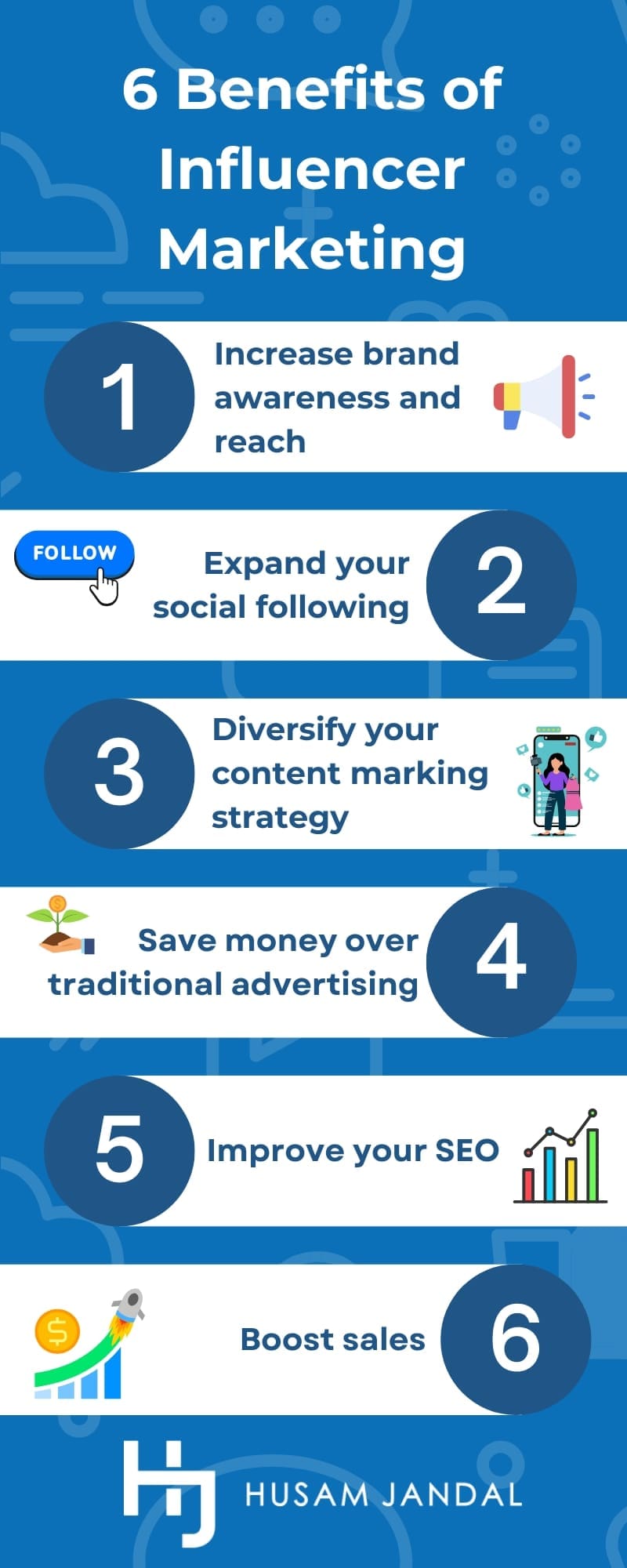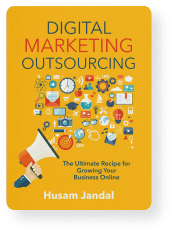 Influencer marketing is growing in leaps and bounds. More than 80 percent of marketers are using influencer marketing, Social Media Today reports, and the market now tops $16 billion, per Influencer Marketing Hub. But if you aren’t already leveraging an influencer marketing strategy to reach new audiences, the idea of finding the right influencers and developing campaigns might seem a bit intimidating. Give me a few minutes, and I’ll walk you through the basics, including how influencer marketing can help, where to find influencers who align with your brand, and how to set your campaigns up for success.
Influencer marketing is growing in leaps and bounds. More than 80 percent of marketers are using influencer marketing, Social Media Today reports, and the market now tops $16 billion, per Influencer Marketing Hub. But if you aren’t already leveraging an influencer marketing strategy to reach new audiences, the idea of finding the right influencers and developing campaigns might seem a bit intimidating. Give me a few minutes, and I’ll walk you through the basics, including how influencer marketing can help, where to find influencers who align with your brand, and how to set your campaigns up for success.
What is Influencer Marketing?
Digital influencers are people or organizations who have a strong following within a specific niche. Some of the first influencers were bloggers, though the concept has since evolved, and most influencers work via social media.
Because influencers have strong relationships with their audiences or are perceived to be experts or authorities in their field of interest, they have the power to impact buyer behaviors and purchasing decisions.
When brands partner with influencers to help reach their business and marketing objectives, it’s referred to as “influencer marketing.” A typical campaign often involves content creation with product placement and endorsement, as well as distribution of that content. Campaigns are generally carried out via social media, though it’s quite common for influencer marketing campaigns to extend beyond these platforms as brands move more toward multichannel and omnichannel experiences. For instance, Dunkin’ Donuts released a drink called “The Charli” while working with Gen Z influencer Charli D’Amelio.
The 3 Rs of Influencer Marketing
Influencers who have the potential to help a brand reach new audiences possess the three Rs: relevance, reach, and resonance.
Relevance
Strong influencers have common ground with the brands they help promote. They usually share niche-specific content and share an audience with the brand.
Reach
Reach refers to the total number of people a brand can potentially connect with by working with a specific influencer. Some influencers have millions of followers. Others may only have a couple of thousand followers.
Resonance
Resonance relates to the engagement an influencer receives. Brands should keep this in mind when selecting a partner because an influencer with a large reach doesn’t always get the same level of engagement that a smaller influencer with a dedicated following receives.
Influencer Marketing vs. Content Marketing
Content marketing focuses on creating and sharing valuable content, such as blogs, videos, or guides, to attract and engage a target audience. The goal is to build trust and provide value, rather than push for an immediate sale.
Influencer marketing, on the other hand, leverages trusted individuals to promote or share branded content with their followers. While it often falls under the content marketing umbrella, it adds a layer of third-party endorsement and wider reach, helping brands build credibility and expand audience engagement.
Influencer Marketing vs. User-Generated Content
User-generated content (UGC) is any kind of content designed by everyday people. It’s the comments that people leave on articles on a blog, responses to Facebook posts, Yelp reviews, TikTok videos that help bands go viral, and more.
UGC has traditionally been a form of earned media, meaning brands don’t pay for it. It happens organically, much in the way a person might talk to a friend or family member about a brand. However, there are now user-generated content creators, and these people design content for payment. For instance, a user-generated content creator may record a testimonial or an unboxing video and sell it to the brand for distribution.
This blurs the line a bit more between influencer marketing and UGC because both can technically be paid media. Both can boost a brand’s credibility and influence purchases too. The core differences are that:
- An influencer designs and distributes their own content to their audience, which gives the brand more reach. This is handled more as a partnership in which the brand and the influencer work together to ensure the messaging is right.
- A paid user-generated content creator doesn’t distribute the content or increase a brand’s reach. This is handled more as a contractor relationship, in which the brand either encourages the person to convey a specific message or only pays for content that they’re proud to share.
- An unpaid user-generated content creator creates and distributes their own content, but the brand doesn’t have any say in the narrative. A brand can influence UGC by hosting contests and giving prompts, but people will ultimately do whatever it is that they want to do.
Types of Influencers
Influencers are usually categorized by reach as follows:
- Nano-influencers: 1,000-10,000 followers
- Micro-influencers: 10,000-50,000 followers
- Mid-tier influencers: 50,000-500,000 followers
- Macro-influencers: 500,000-1,000,000 followers
- Mega-influencers: 1,000,000+ followers
Benefits of Influencer Marketing

There is a wealth of influencer marketing statistics that highlight the benefits of influencer marketing. For instance, 61 percent of people say they trust influencer recommendations, per Shopify research. The return on marketing investment (ROMI) is also impressive, with the typical brand bringing in $5.78 for each $1 spent, Influencer Marketing Hub reports. A successful influencer marketing campaign not only increases ROI but also drives lasting visibility across the social media platforms your audience uses most. Additionally, influencer marketing can help you:
- Increase brand awareness and reach
- Expand your social following
- Diversify your content marketing strategy
- Save money over traditional advertising
- Improve your SEO
- Boost sales
Risks of Influencer Marketing
Familiarize yourself with some of the potential risks of influencer marketing, so you can take steps to mitigate them. These typically fall into one of four categories: inauthentic partnerships, PR issues, disingenuous influencers, and legal concerns.
Inauthentic Partnerships
Roughly nine in ten consumers say that authenticity is important when choosing a brand, Stackla reports. They can often tell when a brand or influencer is doing something purely for the sake of image or sales, too. Because of this, it’s important to work with influencers who are genuinely a good fit for the brand and are enthusiastic about its products or services. In the same vein, influencers should share the same values as the brand they’re working with.
Furthermore, influencers should have significant creative control over any content that’s created as part of the campaign. This is the only way to ensure the content aligns with the type of content the influencer is known for.
PR Issues
Generally speaking, the more a brand works with an influencer, the better the results are. People trust the partnership, and the lines between the brands begin to blur a bit. This can become a problem if either party behaves in a manner that’s inconsistent with the other’s values. The best way to avoid this issue is to thoroughly examine an influencer’s content before making contact.
Disingenuous Influencers
Sometimes influencers can be disingenuous too. For instance, some have been known to artificially inflate their follower counts. Although this isn’t always easy to spot, brands may catch it by evaluating the influencer’s growth pattern. Follower counts generally rise steadily versus having large spikes. Another telltale sign is a low engagement rate.
Legal Issues
Influencer relationships must be transparent for the sake of authenticity and laws in many jurisdictions. For instance, the United States Federal Trade Commission (FTC) has reached out to influencers, reminding them to “clearly and conspicuously disclose their relationships.
How Does Influencer Marketing Work?
There are five main influencer marketing tactics: sponsored content, special offers, contests, takeovers, and ambassadorships. A single campaign may leverage one or more elements.
Sponsored Content
The most common influencer marketing tactic is sponsored content. With this method, the influencer creates something related to the brand and posts it on their own page. For instance, an influencer in the beauty realm may take a photo of themselves wearing a particular product, then share it with their audience and describe what they used. Or, they might record a quick video tutorial that outlines proper application if that’s more in line with their traditional style.
Special Offers
Oftentimes, sponsored posts are paired with a special offer, such as a discount or free item. The influencer is usually given a special trackable link or unique promotional code to share with the audience, so it’s easier for the brand to gauge the success of the campaign.
Contests
Many brands use influencers for contests and giveaways to help boost engagement even more. In some cases, the influencer simply promotes the contest or creates content related to whatever is being given away. Other times, the brand gives something away that’s related to the influencer.
Takeovers
Brands that want to increase activity and engagement on their own channels can do so by inviting an influencer to manage a profile in a temporary takeover or by publishing the influencer’s content on their own marketing channels.
Brand Ambassadors
Brands that want to work with an influencer for an extended period can make the influencer a brand ambassador.
Cost of Influencer Marketing
It’s helpful to understand the cost of influencer marketing before you begin planning. Rates vary quite a bit based on:
- Whether you retain an influencer directly or go through an agency
- The influencer’s reach
- The influencer’s engagement
- How much work is involved for the influencer
- Where and how the campaign will be promoted
Some general information on influencer marketing costs, as calculated by Influencer Marketing Hub, is provided below for reference.
Cost of Micro-Influencer Marketing (10,000-50,000 Followers)
- $20-$100 per post on Twitter
- $25-$125 per post on TikTok
- $100-$500 per post on Instagram
- $200-$1,000 per video on YouTube
- $250-$1,250 per post on Facebook
Cost of Macro-Influencer Marketing (500,000-1,000,000 Followers)
- $1,000-$2,000 per post on Twitter
- $1,250-$2,500 per post on TikTok
- $5,000-$10,000 per post on Instagram
- $10,000-$20,000 per video on YouTube
- $12,500-$25,000 per post on Facebook
In addition to direct ROI, influencer campaigns often deliver strong earned media value (EMV), amplifying your brand through unpaid shares and impressions.
How to Create an Influencer Marketing Strategy
Now that you probably have some idea of the type of influencer you want to work with, how you want to work with them, and what goals you want to achieve through influencer marketing, let’s look into how to find your ideal influencers and work with them.
Determine Your Management Strategy
Decide how you want to source talent and how you want to manage your campaigns. This usually means choosing between sourcing influencers and managing campaigns on your own or working with an agency. Generally speaking, it’s better to manage your influencer marketing in-house because you want your influencer to feel close to the brand and have more control over campaign guidelines. It’s more cost-effective to keep it in-house too.
Establish Campaign Goals and Messaging
Consider what your company wants to get out of the relationship and the core messages the influencer should be trying to solidify with the audience. Also, consider which metrics you’ll use to measure the success of your campaign. For instance, if you’re focused on growing followers on a specific channel, you’ll need to know which ones when you reach later steps. If your primary goal is to boost engagement across a variety of channels, identify the level of engagement you want to see. You’ll use that information later when selecting influencers.
Identify Your Top Platforms
Refer to your customer personas to identify which social networks will help you reach your audience the most.
Instagram has held steady for years as one of the best platforms to reach people under age 30, Pew reports. More than 70 percent of people between the ages of 18 and 29 use it. Close to half of those aged 30 to 49 leverage the platform as well, so it’s one of the better platforms for general audiences, too. It’s primarily used to share photos, though short videos can also be shared.
YouTube
Four out of five people use YouTube, according to Pew. That includes more than 80 percent of people between the ages of 50 and 64, as well as more than 90 percent of people aged 18 to 49. It also reaches more than 80 percent of those aged 50 to 64, making it the top channel for that demographic, and nearly half of the 65+ crowd. Facebook only beats YouTube by one percent for the group, placing YouTube in a very close second place.
Naturally, YouTube is geared toward video content. Videos of two minutes in length perform best, per Hootsuite, though the platform will give you considerably more leeway.
Even though YouTube dominates for penetration rates in most demographics, Facebook comes in a solid second, typically capturing 70 percent or more of all audiences except the 65 and up group. Where it lacks penetration, it gains versatility. In addition to being able to share video and live stream content, the platform also makes it easy to share text and images.
TikTok
Teenagers originally flocked to TikTok to share their dance moves, and while they still have a happy home on the app, the demographics are shifting as the original group of users has reached adulthood. The platform manages to attract more than a third of those between 18 and 29, per Pew. The platform has managed to attract around a quarter of Millennials and Gen Xers too.
Set a Budget
Although influencer marketing can be quite inexpensive, with single posts starting as low as $20 on some platforms, it should be thought of as an investment. Remember, it returns nearly $6 for each $1 spent. Take a moment to review the approximate costs before moving forward and consider the platform(s) you hope to leverage. Then, map out a budget for your overall campaign.
Create a Branding Guide
Influencers require creative freedom to craft authentic content. However, experienced influencers understand the importance of branding and are more than happy to follow your brand guidelines. If you have a branding or style guide already created, do a quick run through everything in it to ensure it’s current and prep it for sharing. If you don’t have one, draft some guidelines for prospective influencers that include things like:
- Your unique selling proposition
- Proper logo use
- Brand colors
- Brand typography
- Image guidelines
- Voice
- Values
Draft a Project Brief
Whereas a branding guide includes non-negotiable items that an influencer will need to use while creating content, your project brief will be somewhat flexible to start. It’s an opportunity to talk about:
- Campaign goals
- Target audience
- Preferred platforms
- Dates
- Deliverables
In a later step, you’ll collaborate with your influencer to refine your project brief to ensure it works for everyone and that you’re all on the same page.
Find Influencers
Due to the rise in social media influencer marketing, there are now more than 50 million influencers worldwide, per Forbes. Use the tricks below to find influencers and create a shortlist.
Use Social Listening Tools
Even a free tool like Google Alerts will work for this purpose. Set up alerts for your branded terms and industry phrases. If you catch anyone saying positive things about your brand, add them to your shortlist. People who regularly create content about your niche should go on it too.
Browse Social Networks
Naturally, you’ll find influencers everywhere on social media. To narrow it down a bit, try searching for hashtags and keywords related to your brand or niche. You may also find gems in trending content or by joining niche-specific groups.
Some platforms have additional features that can be helpful. On LinkedIn, for example, you can search by industry and job title to find someone who is knowledgeable in your industry and also has a following.
Search for Bloggers in Your Niche
Use a search engine to find bloggers and other content creators within your niche.
Add a Page to Your Website
Oftentimes, savvy influencers seek out brands to work with on their own. If someone already likes what you do, they’re likely to pop over to your website to learn more and see what your company is up to. Create a special page for influencers and link it in the footer menu of your website for them to find. Your landing page should include details about who you want to work with and how you’d like to work with them, plus a link to your brand guide. Make sure it’s easy for them to take the next step, too, such as by including a short form on the page for them to complete.
Check Influencer Marketing Platforms
As a final option, you may also search via a platform that’s specifically designed to bring brands and influencers together. This may be the easiest option, but be mindful of additional fees and contractual requirements.
Perform Influencer Research
Narrow down your candidate pool and see how the influencers on your shortlist stack up. Create a checklist that includes things like whether the influencer:
- Has ties to your audience
- Already creates content in a style you like that aligns with your brand
- Meets follower requirements
- Is active on the brand’s preferred social networks
- Shares your brand’s values
- Is not already serving as an influencer for a competitor
Conduct Influencer Outreach
Start reaching out to influencers two or three months before you want to start your campaign. Keep your initial contact brief. Your formal pitch will come later. To start, just let potential influencers know how they caught your eye and ask them if they’re open to discussing an influencer relationship with your brand.
If the influencer has a formal channel for these types of requests, be sure to use it. Otherwise, try sending them a message directly via social media or through their website.
Once someone expresses interest, you can go into more detail about the project and what you’re hoping to achieve. This is a good time to share your project brief and branding guide.
Negotiate the Terms
During negotiation, you’ll work out the specifics of your contract, such as:
- Exact deliverables
- Timelines and deadlines
- Your content review process
- Data the influencer needs to supply you with
- Any special considerations, such as an exclusivity agreement or usage limitations on the content
- How much, when, and how the influencer will be compensated
Create Effective Content by Collaborating with Your Influencer
Refine the project brief as part of the negotiation process or before the influencer begins work. Again, the influencer must have the freedom to create content in their usual way or it will not resonate with the audience. However, you can be involved in the process to some degree or stipulate in your agreement that no content is to be released without your brand’s approval.
Measure, Review, and Refine Your Strategy
While you can use UTM codes to track some campaign metrics like visits to your website, your influencer will likely be the only one who has access to data such as likes, shares, and comments on their posts. The influencer should share these metrics once the campaign concludes.
Compare the results to your goals. Talk with the influencer and your team to find out what went well and what you might do differently next time.
Show Gratitude
Be appreciative of the influencer’s efforts regardless of the outcome. Long-term relationships spur better results, and the more you work with an influencer, the smoother the planning and execution will go.
Get Help Reaching New Audiences with Influencer Marketing
Influencer marketing can help your brand grow exponentially, but there’s a lot involved in finding influencers, negotiating, and planning campaigns. If you need help with your influencer marketing strategy or just want to increase brand awareness and aren’t sure which methods are right for your business, contact me for a complimentary consultation.





































































